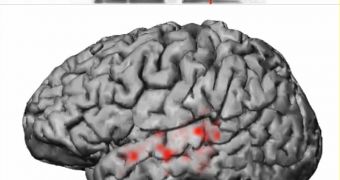Investigators from the University of California in San Francisco (UCSF), led by neuroscientist Edward Chang, were able to discover in a new study how the human brain responds to subtle changes and variations in the auditory impulses it perceives. Apparently, even small changes in the sounds of consonants and vowels produce specific responses in certain areas of the brain.
The regions involved in underlying this ability are all located inside the speech processing area of the brain, the team reports in a paper published in the January 30 issue of the top journal Science.
For the purposes of this study, investigators set out from the assumption that phonemes are the smallest, most basic linguistic elements that can change the meaning of the word and, as such, the way that particular set of sounds is processed and understood by the human brain.
However, in a series of experiments, the team was able to establish that their original premise was wrong. Parts of the temporal gyrus, a complex structure in the human brain, were found to be capable of recognizing and processing even smaller bits of language, such as features.
“We’ve known for a pretty long time now what area of the brain is really important for processing speech sounds. What we haven’t known is the details about how individual sounds are processed,” says Chang, who is the lead author of the Science paper.
The expert and his group carried out their investigation on a group of 6 patients, who were at the time getting ready to undergo brain surgery to treat epilepsy. This enabled scientists to implant an array of electrodes directly on each patient's cortex, and analyze how the brain responded to auditory stimuli.
Before undergoing surgery, each of the test participants had to listen to 400 different people speaking a total of 500 sentences that, between them, covered all phonetic sounds in the American English language.
Upon analyzing the date, researchers found that the superior temporal gyrus was capable of discerning minute differences between similarly-sounding phonemes, something that was previously though impossible. The work sheds some more light on the processing capabilities of the human brain.
Georgetown University neuroscientist Josef Rauschecker comments that the new study could open the way towards more in-depth investigations on the origins and evolution of speech recognition. This is an extremely important human capability, whose origins are still shrouded in mystery, Nature News reports.

 14 DAY TRIAL //
14 DAY TRIAL //